Toyota Highlander ZR Limited review: Less heat, less burn than a V6
/If you want a practical, big and comfy seven-seater but don’t want a diesel, this hybrid is a solid choice.
Read MoreIf you want a practical, big and comfy seven-seater but don’t want a diesel, this hybrid is a solid choice.
Read More
Price: $32,990.
Powertrain and economy: 1.5-litre petrol three-cylinder, 67kW/120Nm (85kW total system output), constantly variable transmission, FWD, combined economy 3.3L/100km, CO2 76g/km.
Vital statistics: 3940mm long, 1695mm wide, 1500mm high, 2550mm wheelbase, luggage capacity 270 litres, 185/55 R16 alloy wheels.
We like: Impressive thrift, playful chassis, strong spec.
We don't like: Drum brakes, overly-fussy dash displays.
CALL it Brutus … the car that not only stabs Toyota’s Caesar in the back, but puts a knife through its heart.
Okay, so the Prius has had it coming for some years. Other Toyotas with intrinsically the same battery-fed petrol-electric drivetrain that made its world debut in a gawky hatch (internationally, the sedan was officially Japan-only) have already proven themselves to be smarter buys in respect to driveability, comfort, social awareness and cost-effectiveness (and, in the here and now, that means you, RAV4).
Yet there’s one ace card the nameplate that ‘started it all’ has always held grimly. The one constant with the nameplate that kicked everything off and has been around since 1997 has been that it’s the ‘go-to’ car if you want ultimate fuel economy. All four generations have set that pace.
On release, Toyota let it be known, but not too loudly, that the 1.5-litre Yaris hybrid, entering the scene with the first three-cylinder petrol engine it has paired to an electric motor and battery, was a thriftier car than the Prius hatch.
However, it wasn’t by much – just 0.1 litres per 100km – and with all indication being that this result came from a lab result rather than the latest WLTP testing protocol, accepted as the measuring stick for cars entering our market, my own supposition was that it probably wasn’t that relevant for real world operability.
So, anyway, with the ZR Hybrid the aim was to drive normally for a week; over a cycle that might be considered usual for an average owner. No special consideration to economy. Just driving. Air con on, going with the flow speed-wise and so on.
Before giving away how it went, a quick recap on what the brand reckons is ultimately achievable. An official combined consumption of 3.3 litres per 100km represents a 0.1L/100km advantage over the full-sized Prius, a 0.6L/100km advantage over the Prius C and also 0.1 up on the most parsimonious non-Toyota here, Hyundai’s Ioniq Hybrid. Also well up on the non-hybrid Yaris, which also has this 1.5 but in different tune. That car’s a guts in this company, with an optimal 4.9.

So, the ZR Hybrid clocked just under 300kms. Around half of that was in urban driving, the remainder dedicated to an open road drive. Sounds like something you might do?
I expected the best thrift coming up around town and, sure enough, it was certainly sipping then, dipping to as low as 2.1 litres per 100km in stop-start traffic. I also expected that the burn would increase on the open road. And, yes, that happened; just as it does with a Prius. Except not to the same degree. Not even close.
My experience with Prius is that you have to work diligently to extract a sub four litres’ per 100km average from open road driving. The Yaris?
For the first half of the trip, the car was run in its economy mode, with an average of 3.8 litres per 100km by halfway. I drove a further 20kms in a 50kmh zone, in a busy traffic stream, then retraced the open road trip, this time with the transmission in its Power mode. Sure enough, this made the car feel noticeably brisker. Yet … and here’s the kicker … the average by the end of the trip was 3.4L/100km. When the car was returned to Toyota three days on, it was up to 3.9L/100m. With no effort involved. That’s thrifty.
Will a Yaris ever be considered by a Prius purchaser? The cars are unequal in size and price, yet the prospect cannot be ignored; the cheapest Prius, the SX, is $7000 clear of the dearest Yaris but if you want specification comparability, then the gap widens by a further $6500.
It’s something of a moot point. Even though Toyota hybrid sales keep strengthening, it’s driven by interest in versions of regular cars: Camry, Corolla and, now, RAV4. Market interest in Prius, a car that was once a must-have for every one whose was anyone, has eroded to the point it barely achieves double registrations figures in any month. Now that the old hero has been outgunned on economy … well, is that the sound of a nail being hammered in?

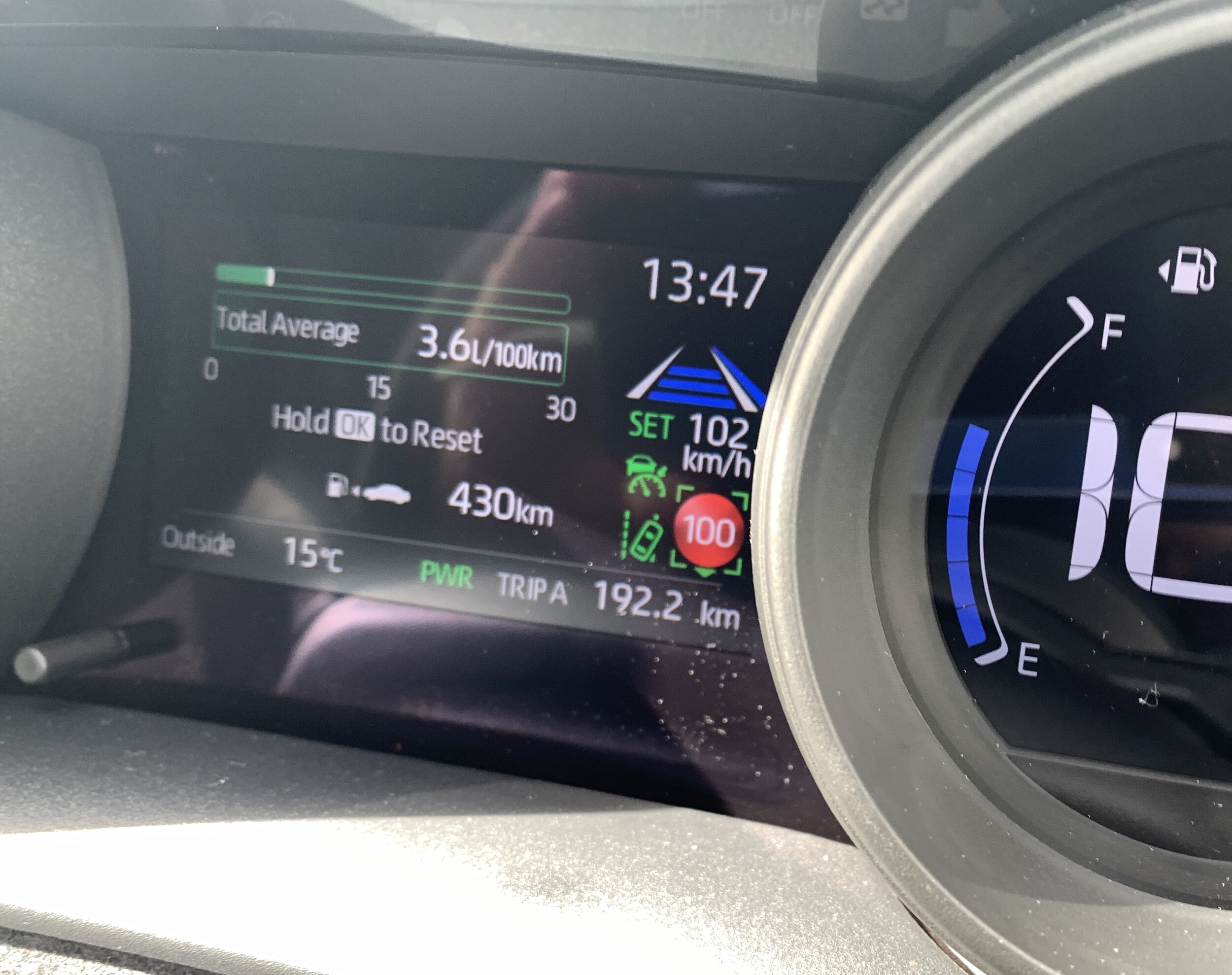
Fratricide isn’t really what Yaris is all about, of course. As always, expectation is to continue supremacy in the supermini zone, which though eroded by those pesky crossovers is still a core business.
The brand has gone in hard in respect to maintaining profile. This is a completely fresh start – new from the tyres up, and the biggest change in philosophy and shape in 15 years.
Going big means going a touch smaller. The shift to the make’s smallest adaptable platform yet, known internally as TNGA-B, allows the car to be 5mm shorter, 50mm wider and 40mm lower than the old model, but with a 50mm longer wheelbase to generate additional interior space. It also sits closer to the asphalt and has a squarer stance, which makes it look more serious this time around.
So much of how the car is shaped reminds the small cars are a design nightmare; there’s huge impetus to deliver a sense of individuality, of course, and character is important as well, yet the abiding remit above all is to maximise the interior capaciousness without affecting exterior compactness. In short, panache is all well and good, but it has to be practical.
Toyota’s perhaps treading a fine line. The Yaris is definitely bold. It’s also … well, a bit quirky, too. A more aggressive nose is attached to a body that appears slightly inflated, with some weird creases, angles and push-outs. It’s a new look for the street, no argument, if not necessarily for Toyota – the profile is strongly reminiscent of a car we never got here, the even smaller Aygo, a co-production with PSA purely for Europe. One tip if you’re keen to be noticed: Sidestep the dull colours, including the dark metallic red on our tester, and instead plump for a vibrant primary hue, then spend the extra $500 on achieving a black roof. Doing so will really lift its kerbside character.

Being big where it counts delivers when you slip inside. The front half of the cabin is a top spot. There’s a good amount of room and, with the front chairs being set quite bit lower and a touch further apart, it not only delivers a far more natural driving position but also one less prone to shoulder-rubbing.
This revision doesn’t impinge on the rear, where a lofty driver doesn’t have to give too much consideration to allow taller passengers to achieve reasonable back seat comfort. Short distances are better than long, perhaps, but there’s foot space beneath the front seats, a sensible amount of kneeroom and decent headroom.
To optimise occupant space they’ve reduced real estate further behind, fortunately not to the cruelly detrimental effect that has really hurt the Corolla. While still better than some, in a sector where every skerrick of space counts, a 16 litre reduction in capacity, to 270 litres now, with all design accommodations – a false floor for hiding valuables, a skinny space saver, hybrid battery under the back seat - it’s coming close to marginal.
If it lightens the load there, it packs it on in another key area: Specification. When it comes to the equipment level, even cynics will have to admit Toyota has upped its game, not least in respect to safety this time around.
The Yaris has yet to undergo the ANCAP crash test that matters most here, but it is surely well-prepared. The new TNGA platform has performed well in its other representations and all models come with eight airbags in total, including twin centre airbags (on the inboard cushion of both front seats) to better protect occupants in a side-impact crash.
On top of this, it’s gone all serious about avoidance tech, with far more than has ever previously been seen in a Yaris. Now everything specifies with speed sign recognition, lane-tracing assistance, autonomous emergency braking with intersection assistance, reverse camera, and automatic high beam, while the ZR chucks in blind-zone warning, rear cross-traffic alert, and front and rear parking sensors. It’s a pity the latter only go into the optimum level, as those functions are increasingly standard on new models, but all in all it ticks a lot of boxes and it’d be churlish to criticise it for that.
All these functions require display space and the priority spot, a modest-sized panel adjacent to the speedo, can become busy. You can be facing a load of icons, all vying for your attention, spanning quite a lot of interest points, from lane keep and speed sign awareness to economy, range and the hybrid system’s operability. Oh yeah, and a few sub-menus that, realistically, shouldn’t be explored until you’re parked up.

Just too much? There’s surely some risk newbies will become bewildered to the point of simply ignoring what the car is relating. Which is surely counter-productive to all the good deeds it can perform.
The ZR has other displays. There’s a head-up projection that’s well designed and comprehensible at a glance; just as it should be. The touch sensitive head unit on the console directly ahead of the transmission lever is right-sized, well sorted in respect to finger-prodding functionality and looks swish. Arrival, at last, of Apple CarPlay integration means you needn’t use any of the in-build functionality, which is just as well, because Toyotas own displays haven’t progressed in years. The fonts, graphics, washed-out colours and slightly whiffy resolution has a staleness and operability is slow. You’d never bother with the in-built sat nav. Google maps are so much faster and better resourced. This, some hard, shiny plastics and use of old-style switches deliver unnecessary cheapness to a cabin that, on the whole, really represents as a step up in quality and style and could, with a bit more effort, have set a new bar for the category.
Given that Toyota has been making hybrids since last century and this is actually the fourth compilation of a petrol-electric drive system to go into a Yaris (though the first for our market), you might start to wonder when a petrol-electric set-up starts to be considered time-worn.
Well, not in this sector. For one, because Toyota alone presents this level of tech in the category and also because this is a fresh approach; not as technically advanced as the system implemented in the RAV4, similar in basics to those in the Corolla, Camry and … ahem .. the Prius but sharper and smarter.
What you’re getting is a three-cylinder version of the more familiar 2.0-litre, four-cylinder, utilising the Atkinson cycle and running a high compression ratio of 14:1.
It’s linked to a new electrical motor producing almost 60kW and 140Nm of torque, along with a lighter lithium-ion battery pack, still driving the front wheels via a CVT automatic gearbox, of course, though even that seems sharpened.
This Yaris is the first to use this new type of battery pack, allowing double the recharge capacity and 50 percent more output. The battery cools through the use of the cabin’s air temperature, negating the need for a stand-alone liquid system.
Impression Toyota has made another step forward increases with operability; the car still doesn’t go wholly electric for prolonged periods, but it does deliver more battery-first involvement: It’s the default when you punch the Start-Stop button at start-up – though, the colder the morning, the shorter the delay before the engine might also fire as well – but once warmed and with a light throttle from standstill you can stay on EV power for almost a kilometre if you don’t go over 40kmh. At higher pace and even under a more enthusiastic approach, the classic Toyota hybrid experience that occurs once underway seems slightly more oriented toward electric optimisation. Hence, I guess, why there’s such a clear fuel-saving benefit.
The thrum that’s a trademark of all three-cylinders is not too obvious here; yes you can hear when the engine is toiling, but it’s not overly obvious. A shame in a way, as it has quite a nice note. When both energy sources are working as one, the car feels quite sprightly and you can feel when the instant torque from the electric motor in lending to the job.
Fun to drive, I hear you say? Well, yes, I’d have to agree with that. It’s quite a world away from those earlier hybrids, where the science project approach was all too obvious.
Of course, there’s a very good reason why Yaris is stepping up for driver involvement. The TNGA was designed to deliver this and, beyond that, the mainstream model is the basis of a genuine hot hatch, the GR Yaris, that’ll be here at year end. Different body (three-door, not five), a substantially different powertrain and drive system (all-wheel-drive) and quite in another league for performance .. yet, underneath it all, the same basic car. I can’t wait.
The ZR Hybrid doesn’t ache for racing stripes, because it’s never sporty. And why should it be? Yet the ride and handling is improved and the bigger footprint is a plus point; all the previous jauntiness has been replaced by a more grown-up feel. It’s settled on surfaces that would jolt the predecessor and is a much more precise-feeling car. At same token, out on the open road, it is less wearying. There’s clearly been huge effort put into making it more refined and much quieter. The engine is rarely outright vocal and, at a steady pace, the mechanical involvement is hardly obvious. More obvious is the tyre roar over coarse chip.

I don’t particularly like CVTs, I’d have to agree this one works competently in this application; it still flares a bit and doesn’t encourage manual intervention but will probably still come across as being well-sorted and in tune with buyer expectation.
The Yaris arriving with rear drum brakes is a bit of an eyebrow raiser. The emergency stopping performance isn’t brilliant; that could also be down to the low-friction tyres as well.
Even this, the overly-complex dash displays and that it has some obviously cheap plastics inside that doesn’t keep the Yaris from winning a lot of plaudits.
It’s thoroughly executed product; the chassis delivers the road manners of cars in the next class size up; the drivetrain has verve beyond its size; the car has flair. We don’t mind the look and look forward to trying out the other family members. The Yaris Cross and the GR are clearly coming off good bones.
Why bother with a hybrid system when small cars are generally fuel-ekers by nature anyway? Fair question: It’s probable the standard Yaris will also take its time to empty a tank. Yet highly improbable it will come close to emulating the efficiency discovered here.
If not quite as technically advanced as that in the RAV4, the Yaris hybrid is a technical tour de force; it’s hard to imagine it not going into other existing cars. It’d be a good fit for the Corolla, I’d suggest. For sure, Toyota has to push on into more overly electric fare – a plug-in hybrid option for the Yaris facelift would seem only logical and, ultimately, it has to front up with a compact fully electric vehicle.
Even so, the Hybrid as it presents now is pretty decent, what adds to the allure is how easily it appears to accomplish its efficiency.
In that respect, you shouldn’t be surprised if you see a death notice for a legend. It’d be sad to see the Prius go, given its history and major impact, but unless it manages to find another ace card, it’s really surely now on borrowed time.
A winning formula for Toyota’s world famous petrol-electric hardware.

Price: $39,990
Powertrain: 2.5-litre four-cylinder petrol hybrid, 131kW/221Nm (163kW total system output), continuously variable transmission, AWD, fuel economy 4.8L/100km, CO2 112g/km (Toyota NZ), 0-100kmh N/A.
Vital statistics: 4600mm long, 1685mm high, 2690mm wheelbase, 18-inch alloy wheels.
We like: Improved dynamics, refined powertrain, roominess.
We don't like: Austere GX trim, CVT, road noise.
TIME to give up on the Toyota that delivered pioneering technology to average suburban driveways all over the world?
Maybe. Not so much because hybrids are no longer the tip of the technology spear – yes, they’re old-hat, but there’s still a role – but more because the ground-breaking Prius is surely no longer crucial to Toyota and Lexus petrol-electric placement.
Those Corollas, Camrys and CH-Rs, RXs and UXs and so on are increasingly becoming the product that allow Japan’s No.1 to make ever more hybrid hay while the sun of environmental concern shines.
Implanting a battery-assisted drive-set into the RAV4 creates the most socially relevant petrol-electric Toyota of the moment.
The only mystery is why Toyota waited so long. Sports utilities of this size have become consumer favourites and the RAV4 has been a giant since its inception in 1994, with more than 8.5 million units sold globally.
What sells the nickel hydride battery-included model line is that it improves efficiency while pretty much maintaining all the positives of the non-hybrid line – a sharp chassis, aggressively rugged new styling, improved specification and more comfortable, roomier cabin.
Toyota build quality is superb and the car’s tech lift, notably with the Toyota Safety Sense package (that now includes an emergency braking system that can spot pedestrians and cyclists day and night) is a winning asset.
That’s not to say this is a product exempt from criticism. Even though it’s another new-age Toyota to display premium touches within, you cannot help but notice unfortunate cost constraint. A front passenger seat fixed awkwardly high, a touch screen with fiddly menu functions and utterly outdated sat nav graphics and, in this entry GX, trim hues that – notwithstanding this is often a fleet grade – from the bargain bin; all could surely be improved without significant effort.

The driving delivers more positively, save that it asks acceptance of a constantly variable transmission. Toyota’s is better than some, thanks to a smart ‘launch gear’ - a physical first gear that "changes up" to the CVT after 40kmh – which helps minimise flaring at kick-off. Yet there’s still irritating high-rev thrash and, overall, it demands an easier-going approach that is at odds with the car’s overall character.
The powertrain itself is otherwise quite pleasant. As per usual convention, it’ll reverse and crawl forward under electric impetus alone, but anything more than a feather-light prod will generally incite the four-cylinder petrol engine to kick in.
A 2.5-litre is relatively large capacity unit for this class of car nowadays and the output from it in isolation is fairly impressive. Add in the impetus from the electric motors and the combined output is all the more of a turn-on. Performance is punchy and the torque flow is solid from low to medium revs. It’s only when you really start to push that it loses its cool; but as said, the CVT will crack first.
You might like to push the envelope, though, because the vehicle dynamics this time around are impressive. The platform is rigid and hanging off it is a well-sorted MacPherson-strut front and multilink rear suspension that’s compliant enough to cope with bumps and uneven surfaces yet firm enough to provide tidy cornering. The electromechanical power steering delivers well, too. Only the brakes raise a flag; they don’t lack for ability but the feel is wooden, as it goes with regenerative braking.
The all-wheel-drive comes from using a 40kW electric motor mounted directly to the rear axle. That’s a far cry from hardcore tradition, but even though RAV spells out to ‘recreational activity vehicle’, Toyota never intended it to be a junior Land Cruiser.

It can run all four wheels or alternately divert power to the rears alone, uses the brakes to mimic the effect of a limited slip differential and can even handle towing. Just 1500kg, mind, so don’t get carried away at the garden centre.
Is 6.1 litres per 100km economy from my week worth crowing about? Not if you have any faith in the maker-claimed optimal of 4.1L/100km being even remotely achievable outside of a laboratory. A colleague burned a touch more from a long, exclusively open road run, whereas mine included a fair mix of urban tootling and I’m confident it could have improved if more gently driven.
Of course, it’s fair to argue that, with hybrid, the RAV4 is merely catching up with the Toyota norm and might have made more impact had it matched the Mitsubishi Outlander and gone to a plug-in rechargeable set-up.
Good news is that this expectation might not be far from being fulfilled. Talk is that a RAV with the same hardware that goes into the Prius Prime PHEV will be revealed at a motor show before too long. That’ll conceivably give us a RAV with capability of travelling up to 50km on battery juice alone. Game set and match, Outlander?
As for a fully electric Toyota? Well, one of those is coming as well. But probably not in this format.
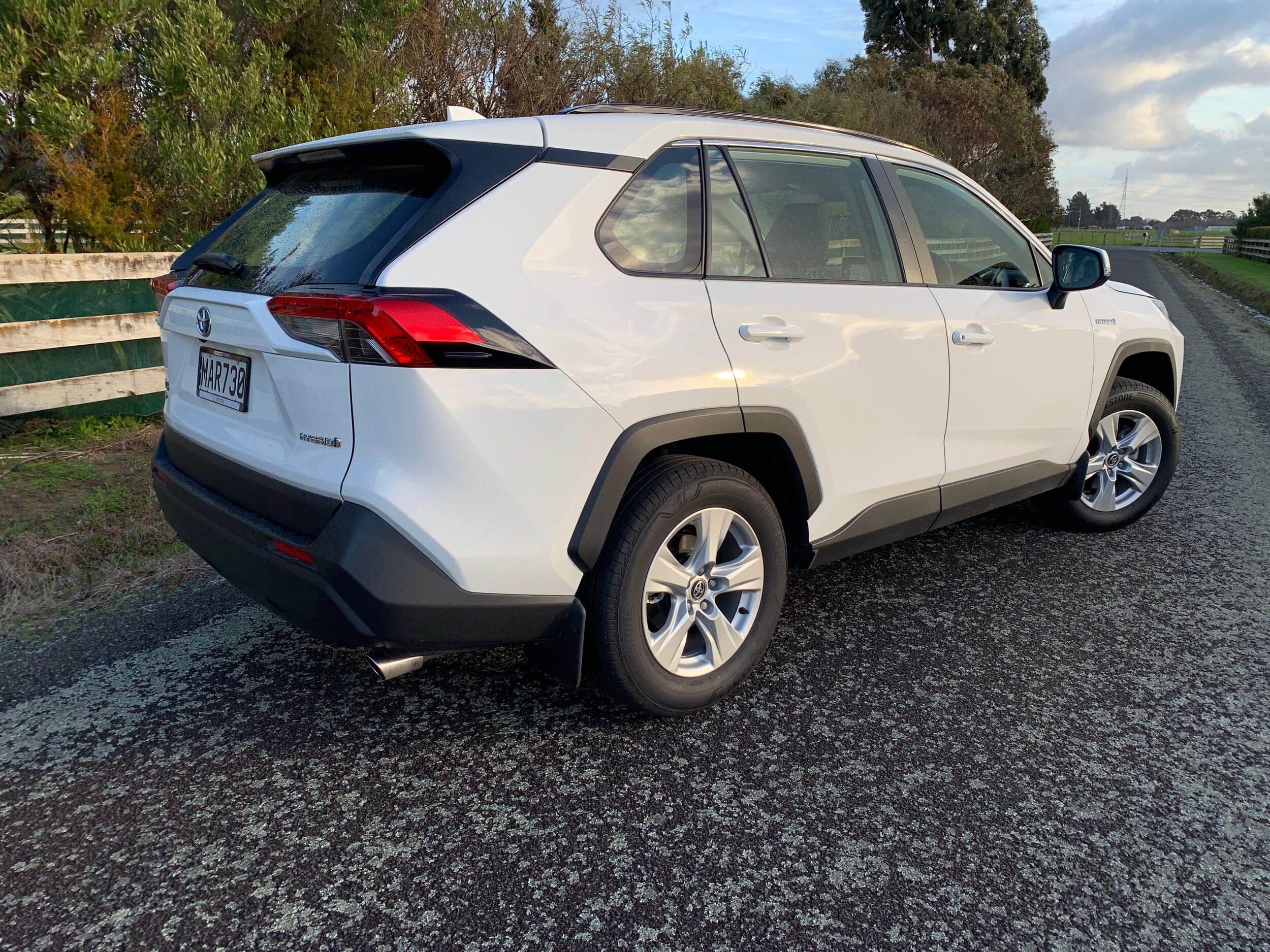
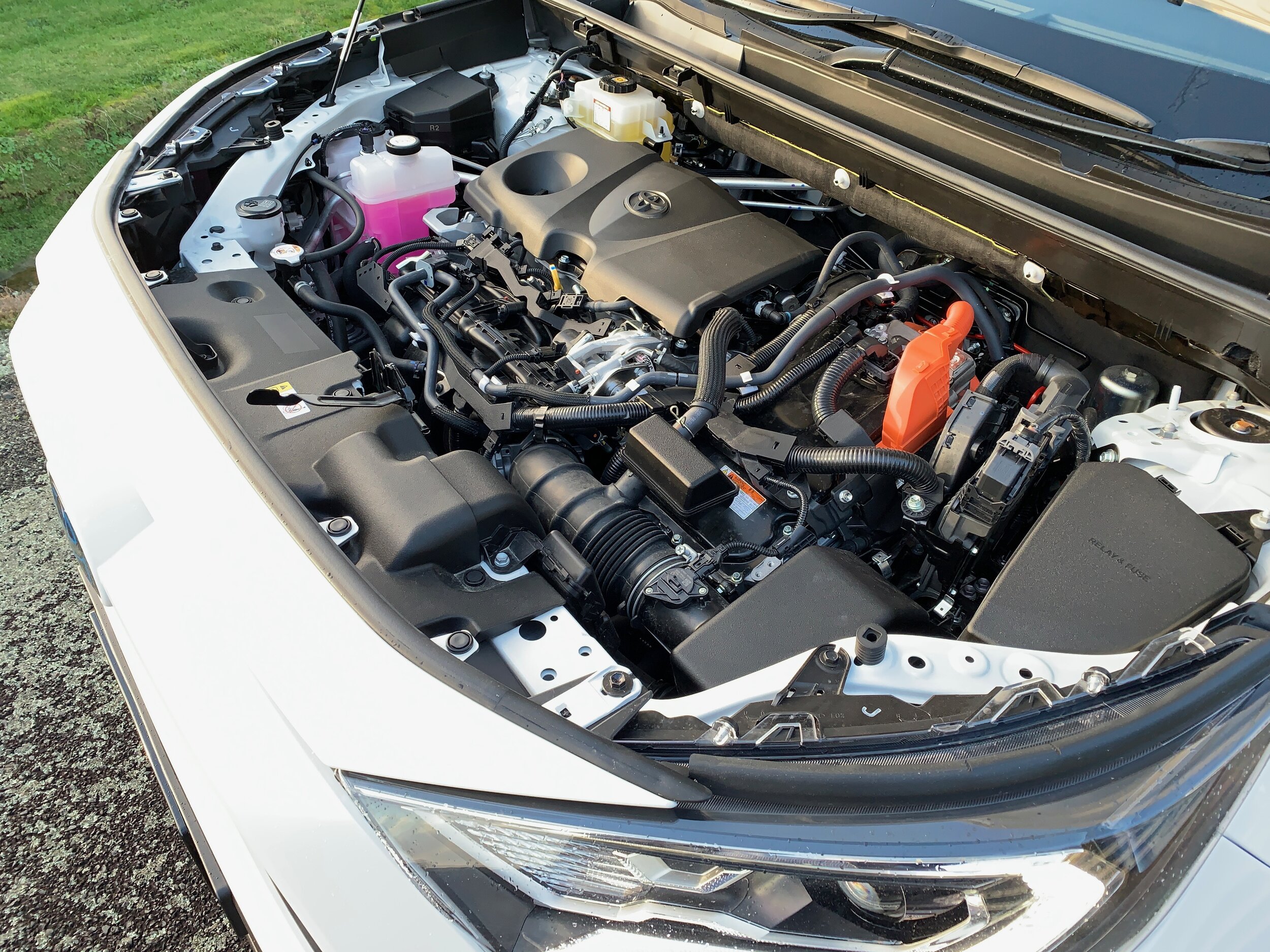
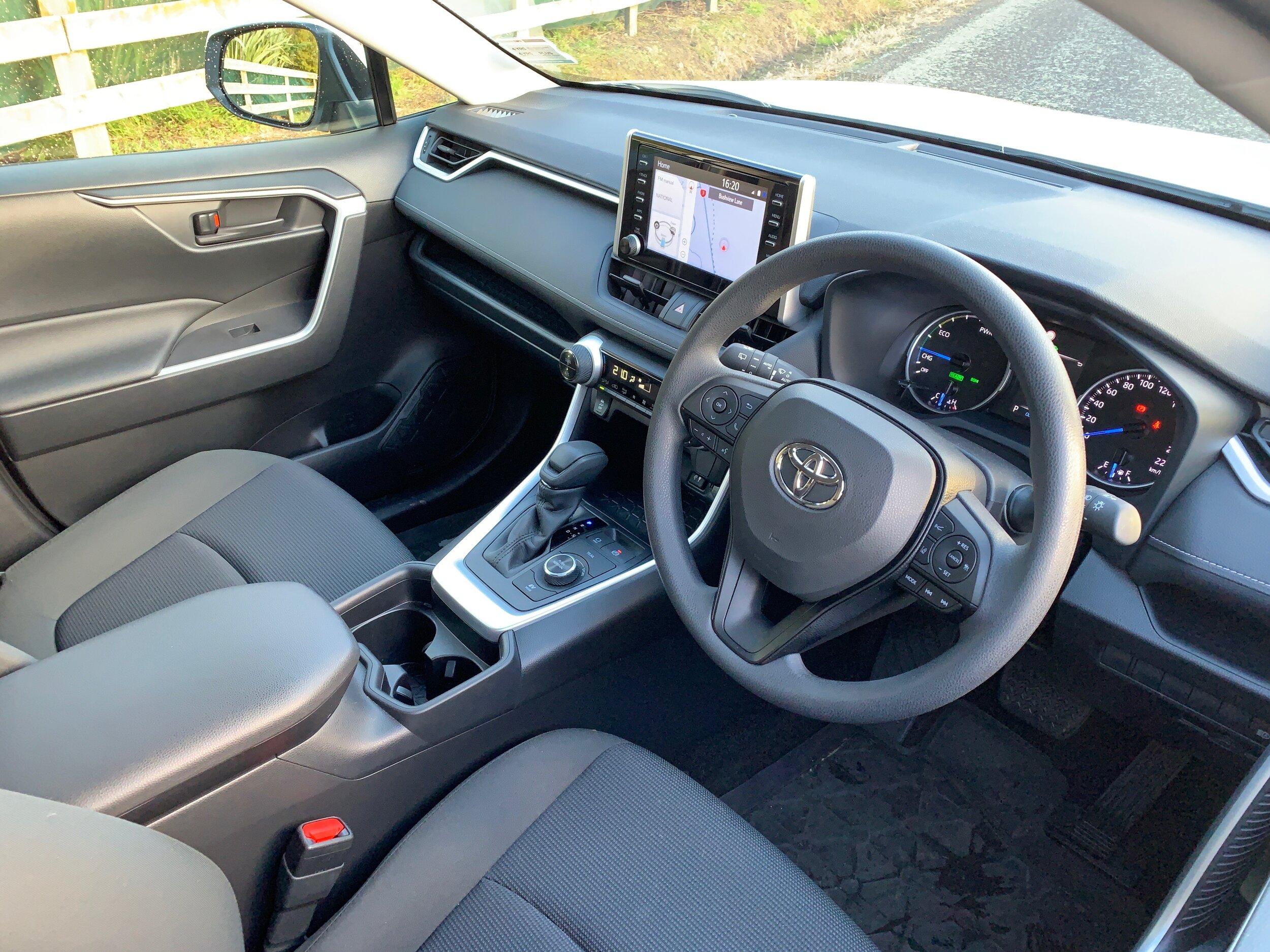
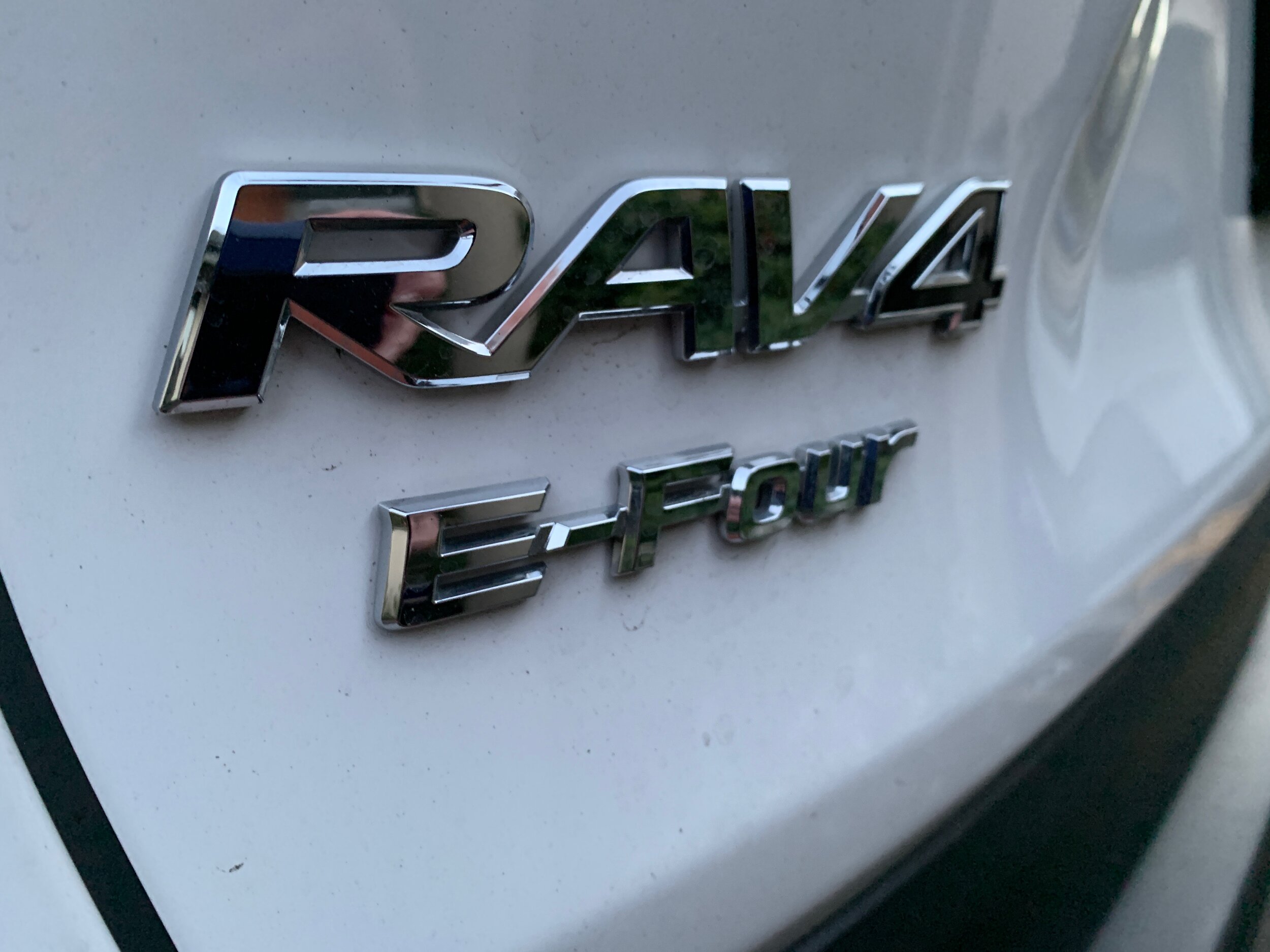
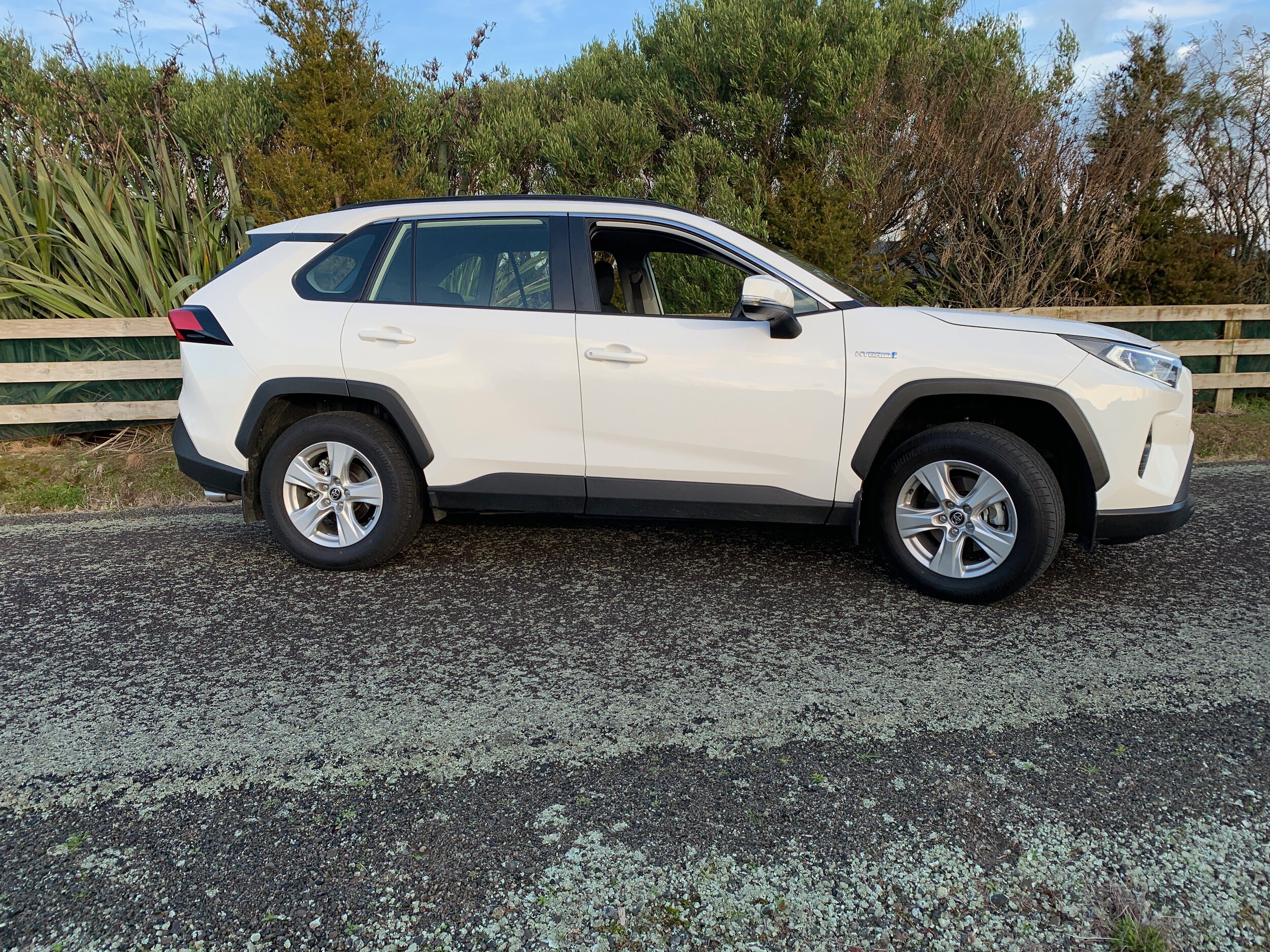
MotoringNZ reviews new cars and keeps readers up-to-date with the latest developments on the auto industry. All the major brands are represented. The site is owned and edited by New Zealand motoring journalist Richard Bosselman.